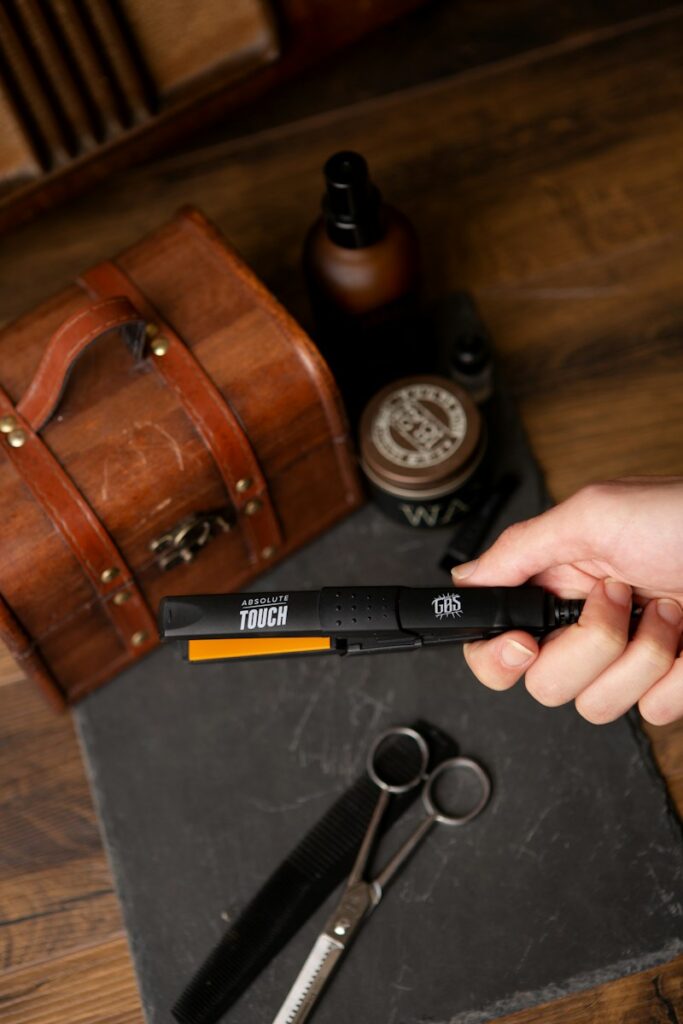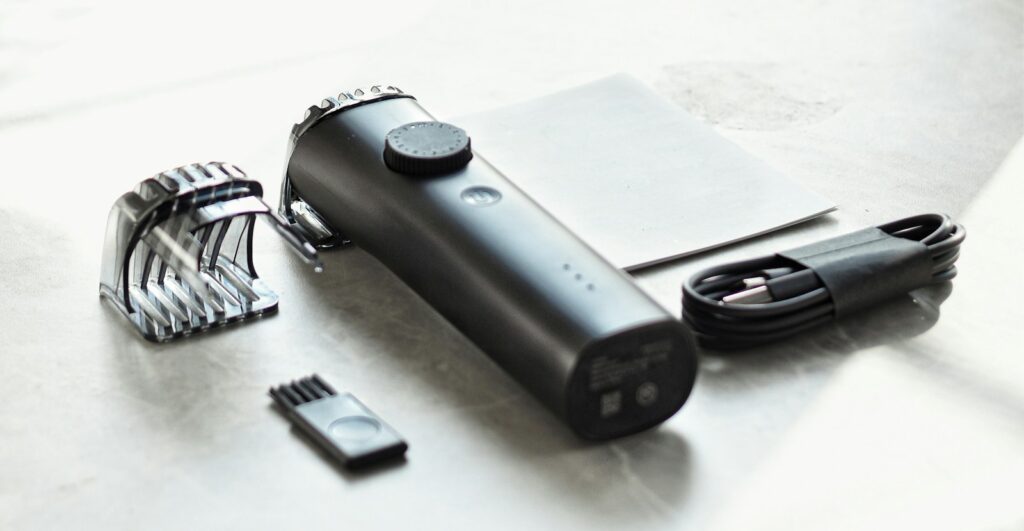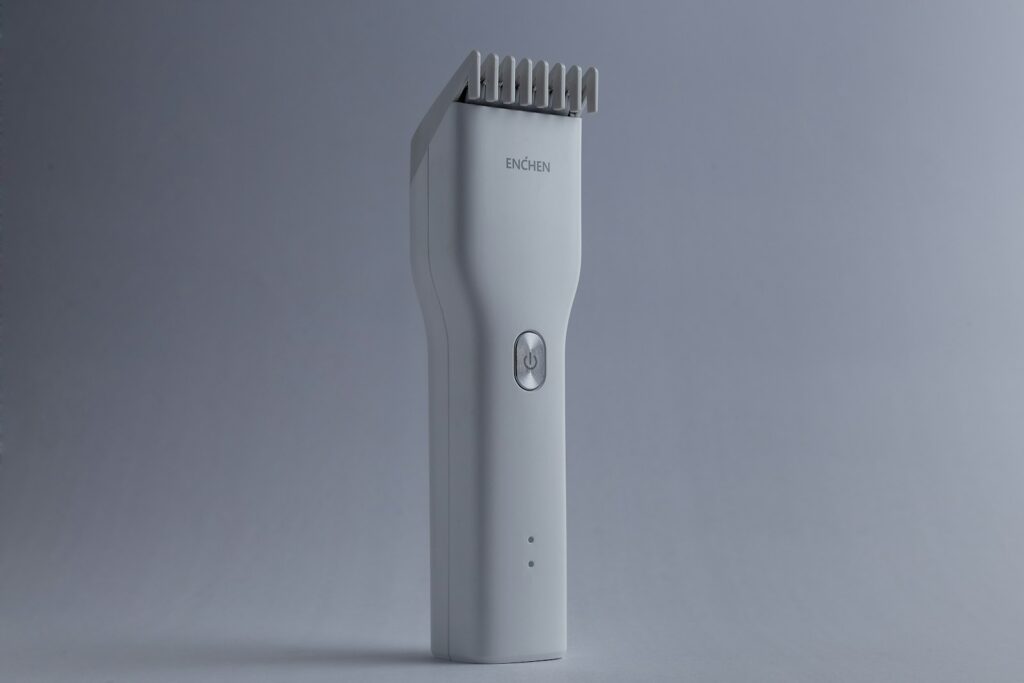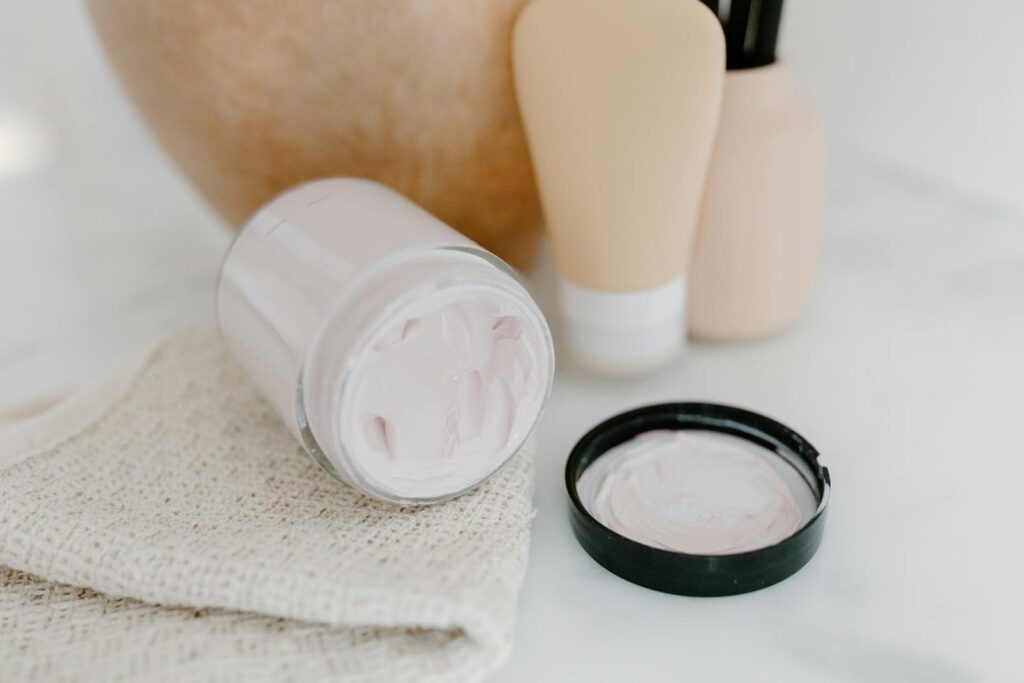Understanding the intricacies of beard growth is pivotal for individuals aiming to cultivate a well-maintained and lustrous beard. Each stage of this process presents its own set of challenges and demands specific care and attention. From the initial days of stubble to the full-fledged beard, there are vital considerations to explore, including genetics, grooming practices, and lifestyle influences. This guide aims to provide a comprehensive overview of the stages of beard growth, offering practical insights and essential tips to navigate this journey successfully. Whether you are at the early stages of beard growth or seeking to enhance the quality of an existing beard, the knowledge shared in this guide is indispensable for achieving a healthy and stylish beard.
Key Takeaways
- Proper beard care and grooming routines, including regular washing, conditioning, and the use of beard oil, are essential for healthy beard growth.
- Beard growth takes time and patience, with different stages and potential for patchiness along the way. It’s important to resist the urge to compare your beard to others and avoid trimming too early.
- Factors such as genetics, age, testosterone levels, diet, exercise, and race can all play a role in beard growth patterns and quality.
- External factors like stress, smoking, sleep, environmental conditions, and grooming practices can impact beard health and growth. It’s important to protect the beard from damaging factors and adopt proper grooming techniques.
The Ground FloorThe Beard Growth Stages
The ground floor of understanding beard growth stages involves careful attention to grooming and skin care before embarking on the journey of cultivating a healthy and robust beard. In the early stages of a beard, it is crucial to shave regularly and use quality shaving products for lubrication and moisturization. Good skin condition is essential for healthy beard growth, so preparing your facial skin before growing a beard is imperative. Using an after-shave product to minimize skin irritation and keeping your face moisturized during the newly shaved phase sets the stage for successful beard development stages.
During the beard stages by week, most men experience little change in appearance during the first week. Growth may be concentrated in the mustache and goatee areas or on the cheeks and neck. As the beard stages progress, beard itch is common due to sharp whiskers, but using beard oil and washing your beard can relieve itch and keep it clean. As the real growth begins, beard growth becomes clearer after four to six weeks, with whiskers longer than one inch being considered part of a beard. Embracing the journey and continuing with the beard growth process is crucial as the beard development stages advance.
Stage 1: The First Week
In the initial stages of beard growth, the first week marks the beginning of the journey towards cultivating a healthy and robust beard, requiring careful attention to grooming and skin care. During this stage, most men experience little change in appearance, but it is crucial to establish a good foundation for the facial hair growth cycle. Here are key points to keep in mind during the first week:
- Minimal Change: Most men might not notice significant changes in their facial hair during the first week.
- Potential Growth Areas: Hair growth may be concentrated in specific areas such as the mustache and goatee, or the cheeks and neck.
- Vellus Hair Replacement: Vellus hair, the fine, light-colored hair on the face, eventually gets replaced by darker, coarser beard hair.
- Dealing with Beard Itch: Itchiness is common during this stage due to sharp whiskers, but using beard oil and washing the beard can help relieve itch and maintain cleanliness.
During this phase, it is essential to establish a grooming routine and maintain good skin condition to prepare for the subsequent stages of beard growth.
Stage 2: The Real Growth Begins
During the second stage of beard growth, noticeable progress becomes evident as the facial hair continues to develop and take shape. This phase typically occurs between four to six weeks after the initial growth.
Whiskers exceeding one inch in length can now be considered part of a burgeoning beard. It’s common for beard growth to appear uneven and patchy during this stage, which is entirely normal. It’s essential to exercise patience and avoid the urge to compare your progress with others. Additionally, resisting the temptation to trim is crucial as it allows the beard to grow into its natural shape.
Embracing the awkward phases is part of the journey, and it sets the stage for a fuller, more developed beard in the subsequent stages.
By persevering through this phase and maintaining proper care, individuals can lay the foundation for a healthy, well-groomed beard. This stage is a critical point in the beard progression by week, marking the transition from initial growth to the early development of a defined beard.
Stage 3: Yes, That’s a Beard
With a month of growth, a full beard or close to it usually becomes evident, marking a significant milestone in the beard growth process. This stage brings about a noticeable change in the appearance and texture of the beard, signifying progress in the journey towards a full, well-grown beard. Here are some key points to consider during this phase of beard growth:
- Embrace the journey and continue with the beard growth process.
- Take care of your mustache, as it may become uncomfortable.
- Some patchiness may still be present, but larger areas of lush growth appear.
- Grey whiskers may start to show, giving a distinguished look.
At this stage, it’s important to maintain patience and resist the urge to compare your beard growth to others. Understanding the types of beard growth patterns and the beard timeline can provide reassurance as the beard continues to develop. Consistent grooming and care will help manage any challenges encountered during this phase of the beard growth process.
Stage 4: The Real Deal
Upon reaching the four to six-month mark, the beard should exhibit fullness and well-established growth, signifying a significant milestone in the beard growth process. At this stage, the beard should be filled in and well-grown. It is essential to maintain a consistent beard care routine.
Regular combing and brushing help maintain the beard’s appearance, while the use of beard oil and beard balm keeps the beard under control.
High-quality grooming tools such as combs and brushes are recommended to ensure proper maintenance. It’s important to continue regular washing and conditioning of the beard, as well as applying beard oil to replenish depleted oils and keep the beard moisturized.
For individuals experiencing beard itch, it is common during this stage due to sharp whiskers, and it may last for a few weeks. To relieve itch and keep the beard clean, using beard oil and washing the beard regularly is recommended. Understanding the stages of a beard growth and the levels of beard development is crucial for maintaining a healthy and well-groomed beard. It’s also important to follow a proper shaving direction chart and beard growth direction to ensure optimal care and maintenance.
Stage 5: Staying the Course
Reaching Stage 5 in the beard growth process marks a crucial point in maintaining the progress and health of the beard. At this stage, it is important to stay committed to the journey and continue providing the care and attention that the beard needs. Here are some essential points to consider during this phase:
- Beard Direction Growth: Pay attention to the direction in which your beard is growing and use proper grooming techniques to train the follicles for a more uniform and tidy appearance.
- Different Types of Beard Growth: Understand that different areas of the beard may grow at varying rates and densities. Embrace the uniqueness of your beard and resist the urge to compare it to others.
- Itchy Beard Stage: If you experience itchiness, continue using beard oil and regularly washing your beard to alleviate discomfort and promote cleanliness.
- Awkward Stages of Beard Growth: Embrace any awkward phases and avoid the temptation to trim or shape the beard prematurely. Patience is key to allowing the beard to reach its full potential.
The 3 Phases of Hair Growth

As the beard progresses through its stages of growth, understanding the 3 phases of hair growth becomes essential for maintaining the health and appearance of the beard.
The beard growth phase consists of the anagen phase, catagen phase, and telogen phase.
In the anagen phase, the active growth phase, hair follicles produce new hair. This phase typically lasts 2 to 6 years and determines the length of the hair.
Following this, the transitional hair beard enters the catagen phase, a brief intermediate phase lasting about 2-3 weeks. During this time, the hair follicles shrink and detach from the dermal papilla.
Finally, the telogen phase is the resting phase, where old hair is shed to make way for new hair. This phase lasts about 5-6 weeks and is essential for the renewal of hair follicles.
Understanding these different beard growth patterns and stages of growing beard is crucial for comprehending the types of beards growth and maintaining optimal beard health.
The Anagen Phase
During the anagen phase of beard growth, the hair follicles are actively producing new hair, leading to the initial and most significant stage of growth. This phase is crucial in understanding the stages of a beard and the different facial hair growth patterns. Here are some key points to consider during the anagen phase:
- Facial hair grows sideways during the anagen phase, resulting in the initial formation of the beard.
- Different facial hair growth patterns emerge as the anagen phase progresses, leading to unique beard growth by month.
- The stages of a beard are defined during the anagen phase, setting the foundation for the subsequent growth phases.
- Understanding the anagen phase is essential for individuals seeking to support healthy beard growth and maintain optimal facial hair condition.
The Catagen Phase
The transition to the Catagen Phase marks a pivotal stage in the beard growth cycle, signifying a shift in the follicle’s activity and the progression from active growth to a transitional state. During this phase, the beard follicles cease their active growth and enter a period of transition.
This phase is crucial in understanding the progression of beard growth and the development of different beard growth types and patterns.
The Catagen Phase is characterized by the cessation of cell division in the hair follicle and the formation of club hair, which is a type of transitional beard hair. This phase may also reveal uneven beard growth, as some follicles enter the Catagen Phase earlier than others, resulting in varying lengths of beard hair.
Understanding the Catagen Phase is essential for individuals seeking to comprehend the full progression of beard growth and the factors influencing its development.
The Telogen phase
Following the Catagen Phase, the Telogen phase signifies the final stage of the beard growth cycle, representing a period of relative dormancy for the hair follicles.
During the Telogen phase:
- Facial hair may appear to grow sideways or in unexpected directions, as the follicles enter a resting phase.
- Beard growth direction may seem erratic, and this is normal during this stage of the beard growth cycle.
- A two-month beard may experience some shedding as older hairs reach the end of their growth cycle and fall out to make way for new growth.
- The mustache phase may be particularly noticeable during this period, with the mustache hair reaching a length that may cause discomfort or require extra care.
Understanding the Telogen phase is crucial for individuals navigating the different beard stages of growth. It’s important to note that some shedding is expected during this phase, and it’s a natural part of the beard growth process. Patience and proper grooming techniques will help manage any challenges experienced during the Telogen phase.
Factors That Affect Beard Growth

Factors influencing beard growth encompass a wide range of genetic, hormonal, and lifestyle elements that contribute to the development and maintenance of facial hair. Understanding these factors can help individuals navigate the various stages of beard growth and optimize the health and appearance of their facial hair. The table below provides a summary of key factors affecting beard growth:
| Factor | Description |
|---|---|
| Genetics | The presence of a family history of beard growth affects the likelihood of developing a full beard. |
| Age | Beard growth typically starts around age 13, with the most rapid growth occurring between 25 and 35. |
| Testosterone | Higher levels of testosterone contribute to thicker and darker facial hair. |
| Diet | A balanced diet rich in protein, vitamins, and minerals supports healthy beard growth. |
| Environmental Factors | Harsh weather, pollutants, and chemicals can impact beard health and growth. |
Understanding these factors can aid individuals in managing their beard growth journey and addressing any challenges they may encounter, such as uneven beard hair growth or variations in facial hair growth direction. By incorporating appropriate lifestyle adjustments and grooming practices, individuals can enhance their beard growth experience.
Genetics
Understanding genetic influences on beard growth is essential for individuals navigating the various stages of facial hair development and seeking to optimize their beard health and appearance. Genetics play a significant role in determining beard growth patterns and can provide valuable insights into an individual’s ability to grow and maintain facial hair. Key factors to consider include:
- Inheritance of Beard Growth Patterns: Having a father or grandfather with a beard increases the likelihood of growing a full beard, indicating a strong genetic influence on facial hair development.
- Prediction of Beard Growth: Understanding lineage can help predict the potential beard growth patterns, although genetic traits may not always be consistently passed down from previous generations.
- Variability in Genetic Traits: Genetic influences can result in varying beard growth patterns among individuals, highlighting the unique nature of facial hair development based on genetic predispositions.
Genetic factors, combined with other elements such as age, testosterone levels, and lifestyle choices, contribute to the diverse experiences individuals have with beard growth. By acknowledging the impact of genetics, individuals can better comprehend their specific beard growing patterns and tailor their grooming routines accordingly.
Age
At different life stages, individuals experience varying rates and patterns of facial hair development, particularly in relation to the onset and progression of beard growth. The stages of facial hair growth are influenced by age, with the initial emergence of facial hair typically occurring around age 13.
The most abundant and fastest growth is commonly observed between the ages of 25 and 35. However, it’s important to note that while growth rates may slow with age, the progression of beard growth is not always significantly affected.
Understanding the beard growth timeline and progress in relation to age is essential for individuals embarking on the journey of growing a beard. It allows for realistic expectations and informed decisions about grooming and maintenance practices.
Moreover, recognizing the impact of age on the stages of growing a beard enables individuals to adapt their self-care routines to support healthy and natural beard development.
Therefore, being aware of the interplay between age and the stages of beard growth is crucial for those seeking to cultivate and maintain facial hair.
Testosterone
The level of testosterone in the body directly impacts the growth and development of facial and body hair. Testosterone, a crucial hormone in the beard growth process, influences the thickness, density, and pattern of facial hair. Understanding the role of testosterone is essential for individuals seeking to optimize their beard growth journey. Key points to consider include:
- Testosterone promotes the development of thicker and darker facial hair.
- Higher testosterone levels contribute to the likelihood of abundant and healthy beard growth.
- However, increased testosterone levels can also lead to baldness due to dihydrotestosterone (DHT).
- Monitoring testosterone levels and understanding its impact on beard growth can help individuals navigate patchy beard growth stages effectively.
It’s important for those navigating the stages of beard growth to recognize the significant influence of testosterone on the process. By prioritizing hormonal balance and overall health, individuals can optimize their beard growth journey and achieve the desired facial hair growth types.
Diet
The substantial role of diet in beard growth is underscored by its impact on hormonal balance and overall health, complementing the significant influence of testosterone on the process. Different stages of beard growth are influenced by the intake of essential nutrients.
During the initial stages of growing a beard, a diet rich in protein, vitamins (B, C, D), zinc, and iron is crucial for promoting healthy beard pattern growth. Protein is essential for strong and healthy hair, while vitamins and minerals support overall beard health.
As the beard progresses through the stages of growth, maintaining a well-rounded diet becomes increasingly important to support the continuous development of facial hair. Incorporating beard growth pictures by week into the dietary journey can also provide visual feedback on the effectiveness of the chosen nutrition plan.
Therefore, individuals seeking to serve their beard growth goals should pay close attention to their diet, ensuring that it aligns with the nutritional requirements for optimal beard progression and types of facial hair growth.
Exercise
Exercise plays a crucial role in promoting healthy beard growth by contributing to overall physical well-being and hormone regulation. Regular physical activity boosts testosterone levels, which is essential for stimulating facial hair growth. Additionally, exercise helps in maintaining overall health, including beard growth. To maximize the benefits of exercise for beard growth, individuals should consider the following:
- Cardiovascular Exercise: Engaging in activities such as running, cycling, or swimming promotes blood circulation, delivering essential nutrients and oxygen to the hair follicles for improved beard growth.
- Strength Training: Incorporating resistance exercises like weightlifting or bodyweight workouts can help increase testosterone levels, supporting the development of a fuller beard.
- Stress Management: Exercise acts as a stress-reliever, reducing cortisol levels that can inhibit beard growth. Incorporating activities like yoga or meditation can further aid in stress reduction, promoting healthier beard growth.
- Consistency: It is important to maintain a consistent exercise routine to sustain the positive effects on hormone regulation and overall well-being, which are crucial for promoting optimal beard growth.
Sleep
Regular and sufficient sleep is crucial for promoting optimal beard growth and maintaining overall hair health. Inadequate sleep can disrupt the body’s hormonal balance, leading to a decrease in testosterone levels, which is essential for healthy beard growth. Moreover, poor sleep patterns can affect blood circulation, which plays a significant role in nourishing hair follicles and promoting healthy beard growth. Additionally, the position in which one sleeps can impact beard growth, as consistently sleeping on one side may affect the direction of beard hair growth, potentially leading to uneven facial hair.
To further understand the impact of sleep on beard growth, the table below outlines the correlation between sleep and beard progress by week:
| Week | Beard Growth Progress |
|---|---|
| 1 | Little change |
| 4-6 | Clear growth begins |
| 4 | Full or close to a full beard |
| 4-6 months | Beard filled in and well-grown |
Race
With regards to beard growth, the influence of race on the development of facial hair patterns is a topic of interest and significance. Understanding beard growth patterns by ethnicity can provide valuable insights for individuals seeking to cultivate their facial hair. Some key points to consider include:
- Beard growth patterns by ethnicity vary significantly, with different types of beard growth observed among people from various racial backgrounds.
- Facial hair progression may follow distinct timelines and exhibit diverse characteristics based on an individual’s race.
- Analyzing stages of growing a beard pictures can help individuals of different ethnicities understand the progression of their own beard growth in comparison to others.
- A follicle growth chart specific to different races can aid in comprehending and predicting the stages of beard growth for individuals of diverse ethnicities.
Understanding the impact of race on beard growth is essential for providing personalized and effective guidance to individuals from diverse backgrounds seeking to cultivate their facial hair.
Stress
The influence of race on beard growth patterns is a significant factor to consider when examining the impact of stress on the progression of facial hair development. Stress can significantly affect beard growth stages, leading to concerns such as uneven beard growth and facial hair falling out.
During the stages of growing facial hair, particularly the awkward stage of beard growth, stress can exacerbate the challenges individuals face. This can lead to questions such as “why is my beard growing uneven” and “why is my facial hair falling out”.
Understanding the impact of stress on beard growth week by week is essential, as stress can hinder the natural process of facial hair development. Additionally, individuals may wonder about the rate of facial hair growth, asking questions such as “how much does facial hair grow in a day”.
Considering stress as a potential factor in addressing these concerns is crucial for individuals seeking to cultivate healthy and consistent beard growth.
Smoking
Smoking can have detrimental effects on beard health, including contributing to hair loss and hindering optimal growth. It is crucial to understand the impact of smoking on beard growth and overall facial hair health. Here are some key points to consider:
- Reduced Blood Circulation: Smoking restricts blood vessels, reducing the flow of oxygen and vital nutrients to the hair follicles, which can impede beard growth.
- Dry and Brittle Hair: The chemicals in cigarette smoke can lead to dry and brittle beard hair, making it prone to breakage and split ends.
- Delayed Growth: Smoking may slow down the natural growth process of the beard, leading to longer intervals between stages of growth and delaying the achievement of a full, healthy beard.
- Increased Hair Loss: Smoking is associated with increased hair loss, which can affect the density and overall appearance of the beard.
Understanding the impact of smoking on beard health is essential for individuals seeking to optimize their beard growth and maintain healthy facial hair. By minimizing or quitting smoking, individuals can promote better blood circulation, improve hair quality, and support the natural growth stages of their beard.
Final Thoughts from the Beard Brothers World Team
Understanding the stages of beard growth is crucial for achieving a well-groomed and healthy beard. Just like tending to a garden, each stage requires tailored care and attention to flourish.
By addressing skincare, grooming practices, and lifestyle factors, individuals can navigate the challenges of beard growth with confidence and success.
Remember, just as a gardener tends to their plants, nurturing and patience are key to cultivating a thriving beard.







